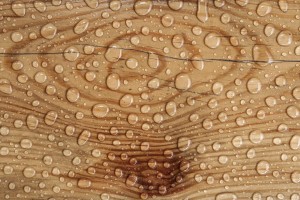Once you are ready to place your hardwood flooring, you want to be sure it is as protected as possible. Besides physical damages, you also want to be sure you guard your gorgeous new floors against other types of damage. One of the sneakiest and most devastating causes of damage to your hardwood flooring comes from moisture. But if you’re looking to prevent moisture on hardwood flooring, you’ve come to the right place. Let’s take a closer look at how to go about preventing moisture on hardwood flooring.
Protecting Floating Flooring
What is floating flooring, and how do you protect it? After all, your floors do not literally levitate off the ground. Laminate and tile flooring are two possible flooring types. These tiles can be made from wood or hardwood. Essentially, you can protect a floating floor, whether or not they are made from hardwood, with some sheets of plastic. The plastic sheets go in underneath the layers of flooring. If you’re intent on using wood or hardwood in your subflooring, you won’t need to use the plastic sheets. This type of subflooring needs to be able to breathe, or move, while in use. Another thing to note about these plastic sheets is that they don’t need to be too thick. But if you’re interested in other types of subflooring, you will want to protect them as much as the actual flooring on top.
Protecting Attached Flooring
Attached flooring is essentially a layer of flooring that has been attached to its subflooring by nails. Both the subflooring and the main flooring need to be protected against moisture infiltration. You should start by placing a plastic sheet between the subfloor and the dirt under it. Then, between the subfloor and your brand new hardwood flooring, you should use a special type of paper. This special paper can absorb more of the moisture on hardwood flooring. You might have to rearrange your budget to account for these two types of protection, as it can be more expensive than you might expect. Luckily, you can find these types of paper and plastic at stores that sell flooring materials.
Protecting Glued Flooring
Another type of flooring you will want to protect is glued flooring. Glued flooring is, as implied by its name, glued to its layer of subflooring. Concrete is one example of a material used for subfloors. Concrete subfloors are prone to high levels of moisture. If you live in humid areas or areas that expect heavy rainfalls, you will need to be prepared for the weather. If your hardwood flooring is going to be glued to concrete subflooring, you will need a thick moisture shield. Using materials such as epoxy or resin can be a feasible solution to any humidity problems you may encounter. But remember to let the epoxy finish drying before you attempted to lay down your new hardwood flooring.
Ready to Prevent Moisture on Hardwood Flooring? You Can Trust John K Eareckson & Co.!
When you work with John K Eareckson & Co. Flooring, we will ensure your hardwood floors undergo a stress-free acclimation process and that they sparkle for years to come. From a seamless and beautiful installation to years of maintenance, John K Eareckson & Co. Flooring has the expertise to care for your home’s hardwood floors. For a consultation and more information visit us online or give us a call at 410-788-4200. You can also follow us on Facebook, Google+, Twitter, YouTube, and Flickr.


